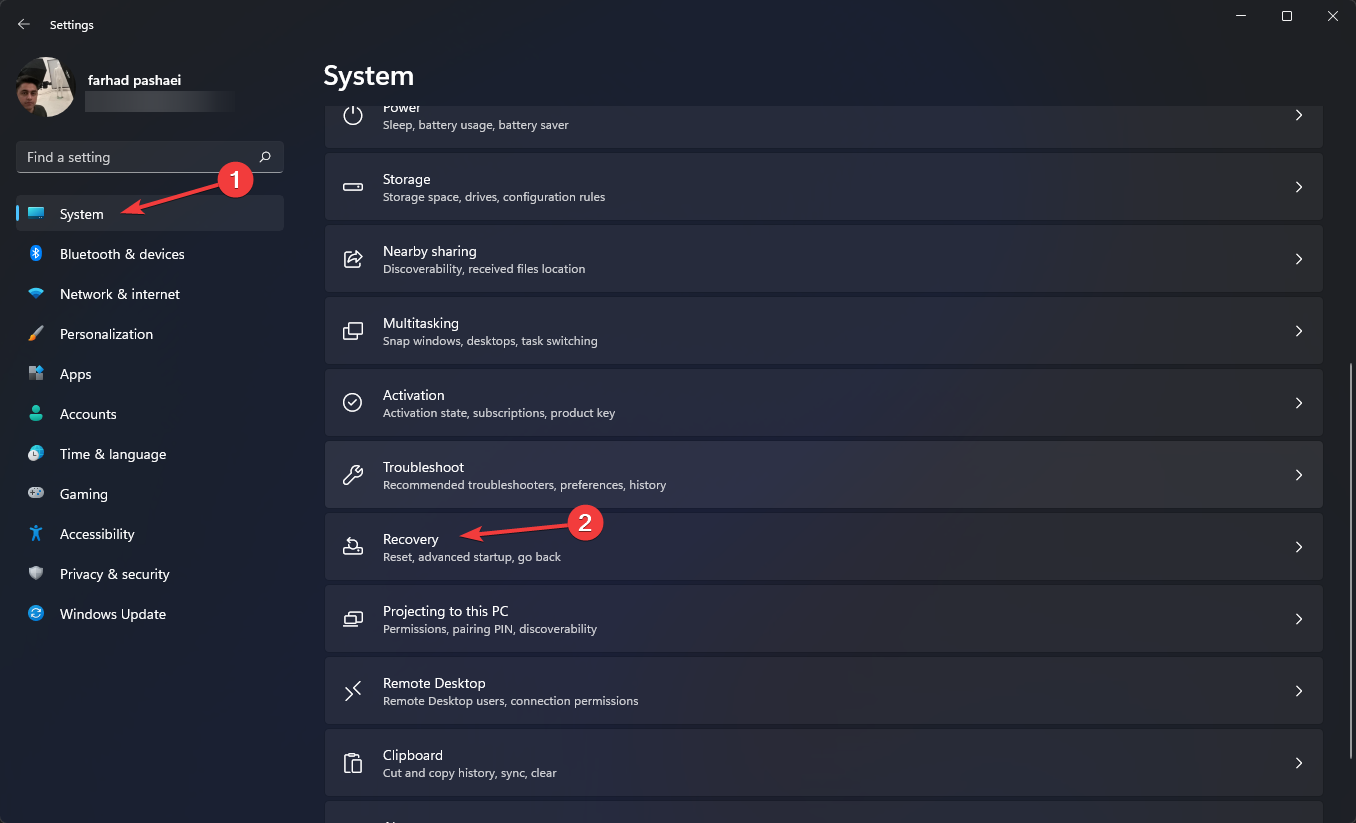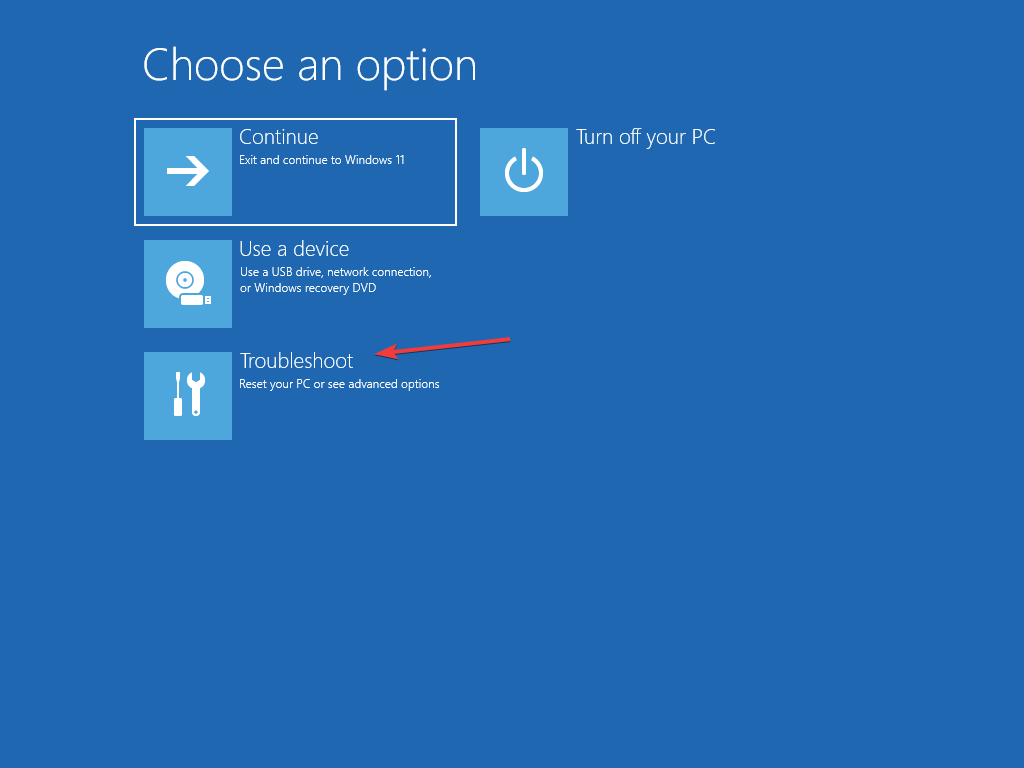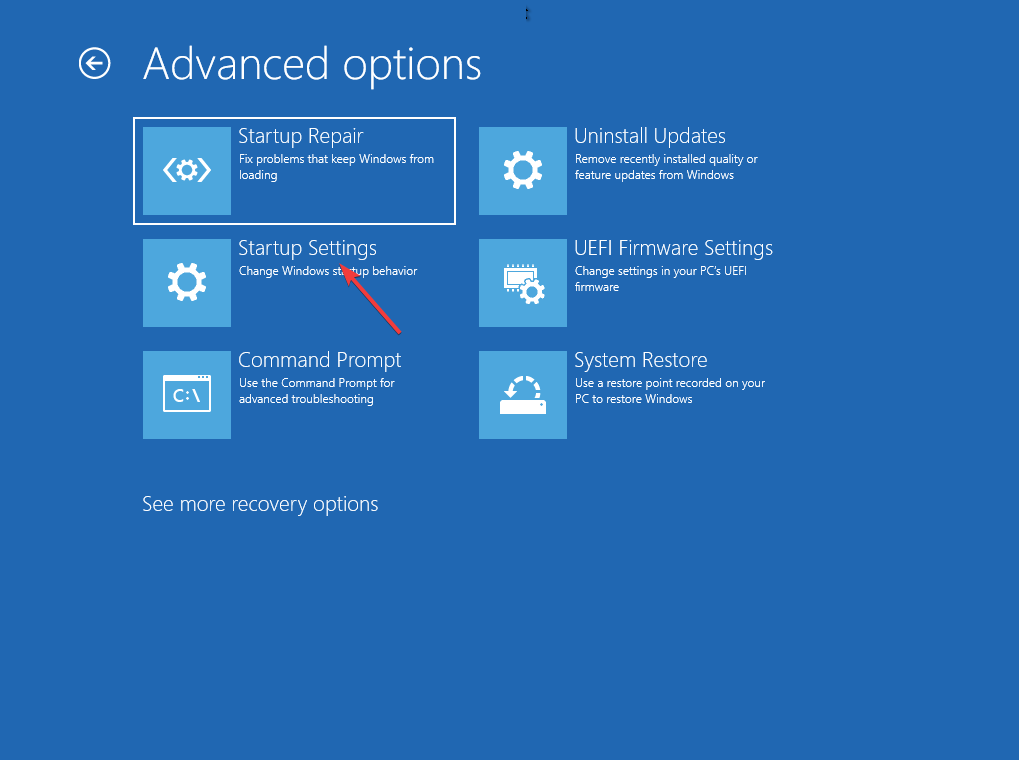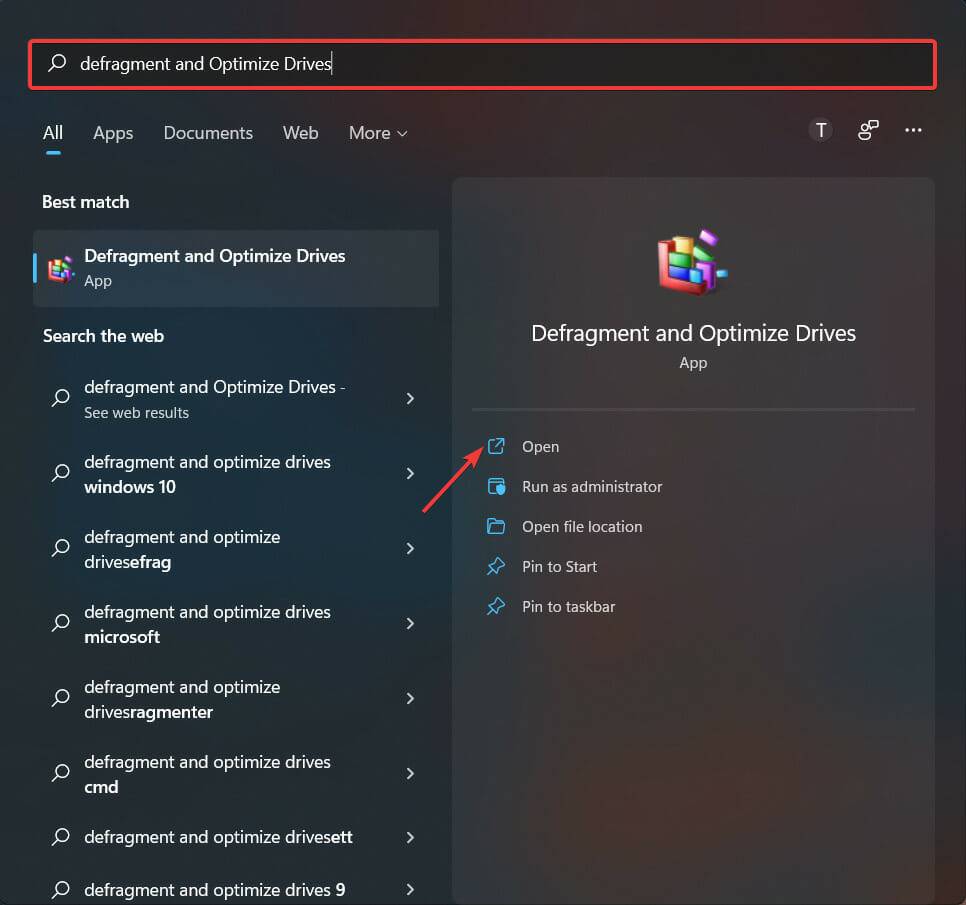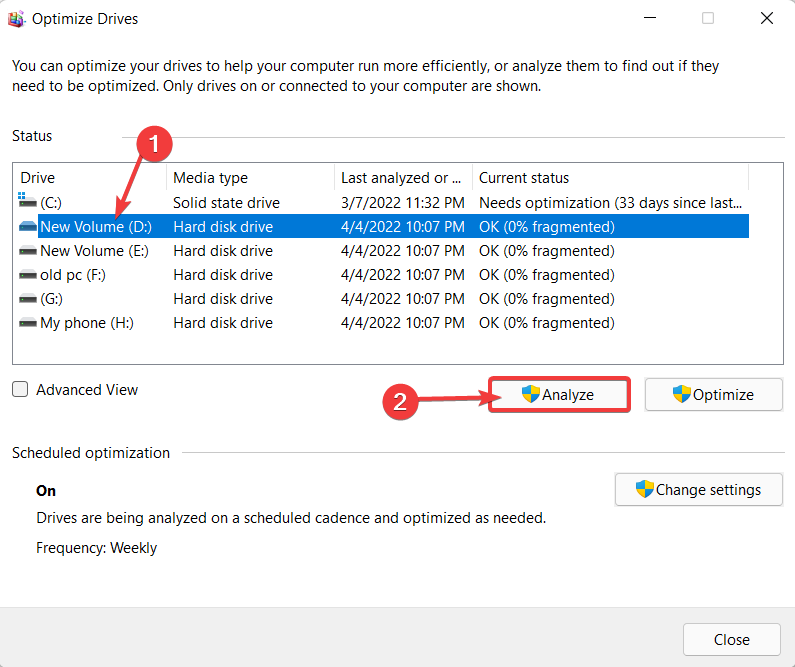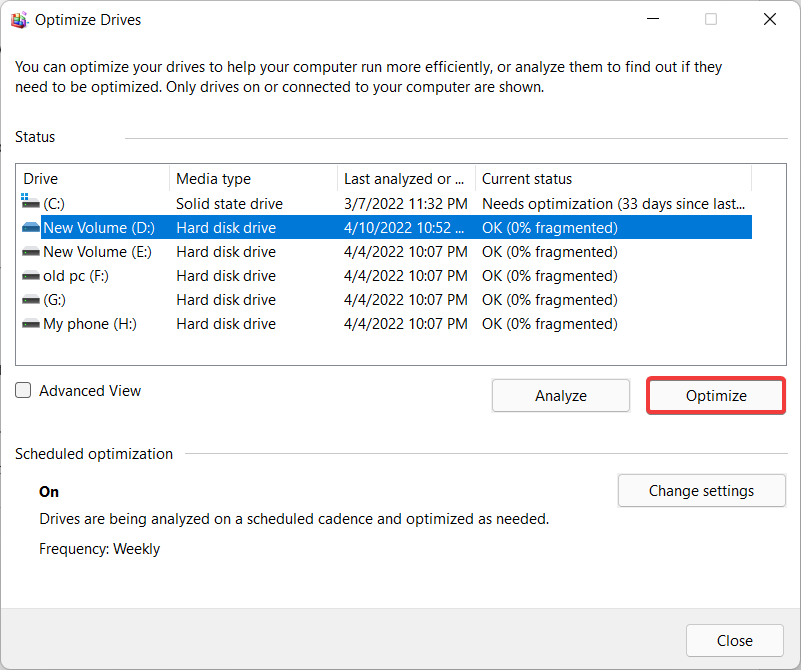4 fixes will be applied if computer shuts down during virus scan
Antivirus software is one of the most important tools you can use to protect your device, but sometimes it can cause your computer to shut down during a virus scan.
With more sophisticated attacks on your device, it is crucial to have an antivirus application on your desktop and scan your system frequently.
However, you may encounter some difficulties at some point during the process.
For example, your computer shuts down during a virus scan! But don’t worry because we’re here to help you with that.
How do I know if the problem is caused by software or hardware?
- First, press the Windows I key on your keyboard to open Settings.
- Click System and select Restore.

- Under Recovery Options, next to Advanced Startup, select Restart Now.

- After your PC reboots to the Select an option screen, select Troubleshoot.

- Select Advanced Options.
- After that, click Start Settings.

- Select Restart (you may be asked to enter your BitLocker recovery key if available).
- After your PC restarts, you will see a list of options. Select 4 or press to start your PC in Safe Mode without Internet F4, then select 5 or press to use Safe Mode with Networking . F5
Now that we know what is causing our problem, we can focus on the solution, which of course depends on the main cause.
What should I do if my computer shuts down during a virus scan?
1. View Followers
Even in safe mode, if your computer crashes when running a virus check, the problem is most likely hardware related, most likely a heating issue.
So, if you are not familiar with the procedure of using your computer/laptop fan for cleaning, consider asking an expert for help.
2. Install PC Repair Tool
The most common symptom of problems with your computer operating system is a reboot.
Therefore, your computer's operating system may also malfunction. In this case, a PC repair tool is required.
For this, we recommend Restoro, a software that scans your computer, identifies corrupted files, and replaces them, solving problems and improving computer performance.
Restoro also protects your PC from infections and detects potentially harmful websites.
⇒Get Recovery
3. Install another antivirus software
As we mentioned before, safe mode makes everything clear. If you are able to successfully run an antivirus scan in Windows Safe Mode, the problem may be caused by a software issue or incompatibility.
You can try other reliable antivirus software to solve this problem and test its effectiveness. Before installing another antivirus software, don't forget to uninstall the old one.
Now check again whether your computer was shut down during a virus scan. If yes, proceed to the next solution.
If you run everything fine in safe mode, but installing new antivirus software doesn't work, you may need to defragment your hard drive. To do this, follow the steps below.
4. Defragment the hard drive
- Click the Start menu, type defragment and select Defragment Optimize Drive.

- When the window opens, you will see a list of all drives and their current defragmentation status.
Select the drive you want to analyze and click the Analyze button. remember! This process only works on HDDs.
- Wait for the process to complete, then select the analyzed drive and click Optimize.

- Wait for the process to complete.
Keep in mind that depending on the degree of fragmentation, the process may take some time, and there is a higher likelihood that the computer will shut down while the virus scan issue is resolved.
If you are having trouble using Disk Defragmenter, check out this article.
Antivirus protection is vital for anyone who cares about their data and computer systems and wants to prevent any further damage.
Antivirus software acts as a security guard at the entrance to prevent intruders from entering.
Sometimes, however, antivirus software is the source of the problem and shuts down the computer during a virus scan.
Since prevention is far more effective than cure, having a system designed to identify and prevent virus attacks is preferable to spending time and money patching infected devices.
This is why you must install antivirus software and use full scans frequently.
The above is the detailed content of 4 fixes will be applied if computer shuts down during virus scan. For more information, please follow other related articles on the PHP Chinese website!

Hot AI Tools

Undresser.AI Undress
AI-powered app for creating realistic nude photos

AI Clothes Remover
Online AI tool for removing clothes from photos.

Undress AI Tool
Undress images for free

Clothoff.io
AI clothes remover

Video Face Swap
Swap faces in any video effortlessly with our completely free AI face swap tool!

Hot Article

Hot Tools

Notepad++7.3.1
Easy-to-use and free code editor

SublimeText3 Chinese version
Chinese version, very easy to use

Zend Studio 13.0.1
Powerful PHP integrated development environment

Dreamweaver CS6
Visual web development tools

SublimeText3 Mac version
God-level code editing software (SublimeText3)

Hot Topics
 What is the reason why PS keeps showing loading?
Apr 06, 2025 pm 06:39 PM
What is the reason why PS keeps showing loading?
Apr 06, 2025 pm 06:39 PM
PS "Loading" problems are caused by resource access or processing problems: hard disk reading speed is slow or bad: Use CrystalDiskInfo to check the hard disk health and replace the problematic hard disk. Insufficient memory: Upgrade memory to meet PS's needs for high-resolution images and complex layer processing. Graphics card drivers are outdated or corrupted: Update the drivers to optimize communication between the PS and the graphics card. File paths are too long or file names have special characters: use short paths and avoid special characters. PS's own problem: Reinstall or repair the PS installer.
 How to speed up the loading speed of PS?
Apr 06, 2025 pm 06:27 PM
How to speed up the loading speed of PS?
Apr 06, 2025 pm 06:27 PM
Solving the problem of slow Photoshop startup requires a multi-pronged approach, including: upgrading hardware (memory, solid-state drive, CPU); uninstalling outdated or incompatible plug-ins; cleaning up system garbage and excessive background programs regularly; closing irrelevant programs with caution; avoiding opening a large number of files during startup.
 How to solve the problem of loading when PS is always showing that it is loading?
Apr 06, 2025 pm 06:30 PM
How to solve the problem of loading when PS is always showing that it is loading?
Apr 06, 2025 pm 06:30 PM
PS card is "Loading"? Solutions include: checking the computer configuration (memory, hard disk, processor), cleaning hard disk fragmentation, updating the graphics card driver, adjusting PS settings, reinstalling PS, and developing good programming habits.
 Is slow PS loading related to computer configuration?
Apr 06, 2025 pm 06:24 PM
Is slow PS loading related to computer configuration?
Apr 06, 2025 pm 06:24 PM
The reason for slow PS loading is the combined impact of hardware (CPU, memory, hard disk, graphics card) and software (system, background program). Solutions include: upgrading hardware (especially replacing solid-state drives), optimizing software (cleaning up system garbage, updating drivers, checking PS settings), and processing PS files. Regular computer maintenance can also help improve PS running speed.
 Does mysql need the internet
Apr 08, 2025 pm 02:18 PM
Does mysql need the internet
Apr 08, 2025 pm 02:18 PM
MySQL can run without network connections for basic data storage and management. However, network connection is required for interaction with other systems, remote access, or using advanced features such as replication and clustering. Additionally, security measures (such as firewalls), performance optimization (choose the right network connection), and data backup are critical to connecting to the Internet.
 Is PS slow loading related to other programs that are running?
Apr 06, 2025 pm 06:03 PM
Is PS slow loading related to other programs that are running?
Apr 06, 2025 pm 06:03 PM
The secrets to mastering Office software include: understanding different versions and platforms, correctly installing and configuring, proficient in using the software interface, in-depth understanding of feature operations, application collaboration and sharing functions, utilizing templates and styles, mastering advanced skills, and solving common problems. In addition, you need to choose a version that suits your needs, make good use of templates and styles, develop backup habits, and learn shortcut keys and advanced techniques to improve efficiency.
 How to solve the problem of loading when the PS opens the file?
Apr 06, 2025 pm 06:33 PM
How to solve the problem of loading when the PS opens the file?
Apr 06, 2025 pm 06:33 PM
"Loading" stuttering occurs when opening a file on PS. The reasons may include: too large or corrupted file, insufficient memory, slow hard disk speed, graphics card driver problems, PS version or plug-in conflicts. The solutions are: check file size and integrity, increase memory, upgrade hard disk, update graphics card driver, uninstall or disable suspicious plug-ins, and reinstall PS. This problem can be effectively solved by gradually checking and making good use of PS performance settings and developing good file management habits.
 How to set color mode for export PDF on PS
Apr 06, 2025 pm 05:09 PM
How to set color mode for export PDF on PS
Apr 06, 2025 pm 05:09 PM
The secret to export PDFs with accurate colors: choose color mode according to the purpose: RGB for network display, CMYK for professional printing. Check Embed Profiles when exporting to maintain color consistency. Adjust compression settings to balance image quality and file size. For PDFs for networks, use RGB mode; for PDFs for printing, use CMYK mode.



